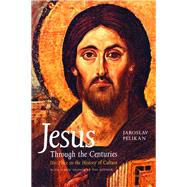
Note: Supplemental materials are not guaranteed with Rental or Used book purchases.
Purchase Benefits
What is included with this book?
|
xi | (4) | |||
| Preface | xv | (2) | |||
| A Personal Preface to Jesus Through the Centuries for the Year 2000 | xvii | ||||
| Introduction The Good, the True, and the Beautiful The nature and purpose of this book: not a life of Jesus, nor a history of Christianity, nor even a history of theological doctrines about Jesus, but a series of images portraying his place in the history of culture. | 1 | (8) | |||
|
9 | (12) | |||
|
|||||
|
|||||
|
21 | (13) | |||
|
|||||
|
|||||
|
|||||
|
34 | (12) | |||
|
|||||
|
|||||
|
46 | (11) | |||
|
|||||
|
|||||
|
57 | (14) | |||
|
71 | (12) | |||
|
83 | (12) | |||
|
|||||
|
|||||
|
95 | (14) | |||
|
|||||
|
|||||
|
|||||
|
109 | (13) | |||
|
|||||
|
|||||
|
|||||
|
122 | (11) | |||
|
|||||
|
|||||
|
|||||
|
133 | (12) | |||
|
|||||
|
|||||
|
145 | (12) | |||
|
|||||
|
|||||
|
157 | (11) | |||
|
|||||
|
|||||
|
168 | (14) | |||
|
|||||
|
|||||
|
|||||
|
|||||
|
182 | (12) | |||
|
|||||
|
|||||
|
194 | (12) | |||
|
206 | (14) | |||
|
220 | (15) | |||
|
|||||
|
|||||
|
|||||
| Notes | 235 | (24) | |||
| Index of Proper Names | 259 | (9) | |||
| Index of Biblical References | 268 |
The New copy of this book will include any supplemental materials advertised. Please check the title of the book to determine if it should include any access cards, study guides, lab manuals, CDs, etc.
The Used, Rental and eBook copies of this book are not guaranteed to include any supplemental materials. Typically, only the book itself is included. This is true even if the title states it includes any access cards, study guides, lab manuals, CDs, etc.